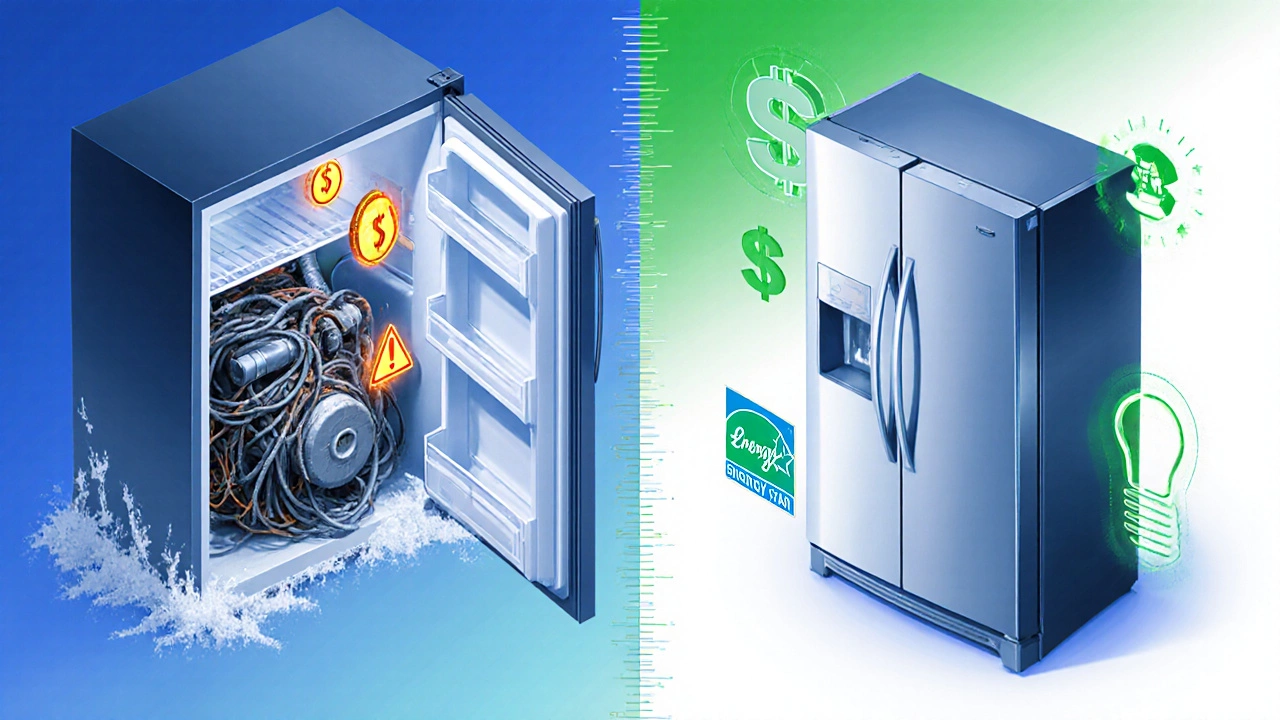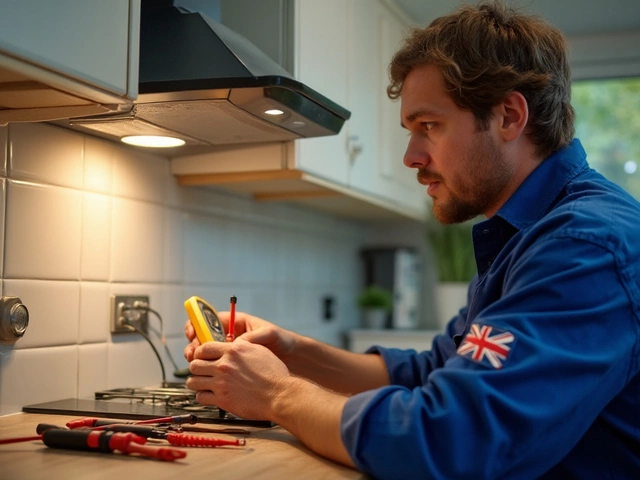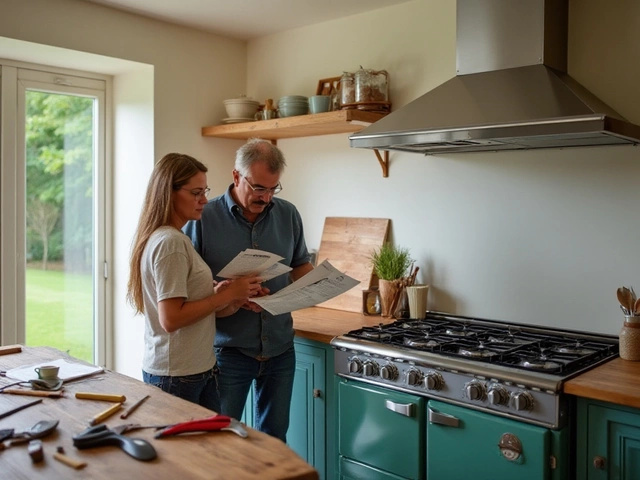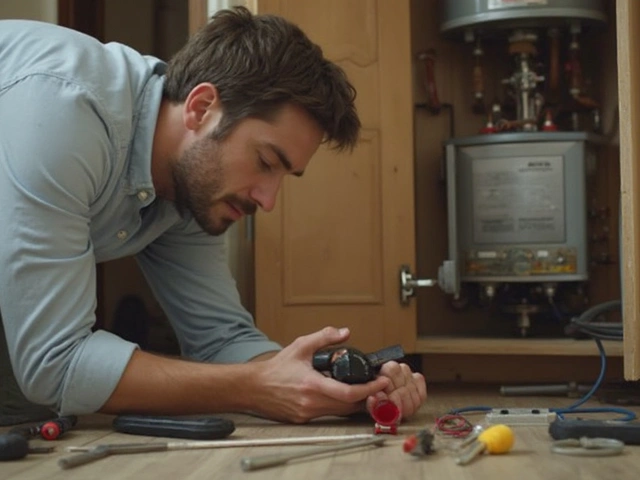Refrigerator Repair vs. Replacement Calculator
Financial Analysis Results
Based on your inputs:
- Repair cost:
- New fridge price:
- Annual energy savings:
- Warranty status:
Recommendation:
5-Year Total Costs:
- Repair scenario:
- Replacement scenario:
When your kitchen’s centerpiece starts humming louder than usual or the freezer begins to turn into an icebox, the first question is usually: refrigerator repair or replace? A seven‑year‑old unit sits in a gray zone-old enough that parts start to scarcer, but not ancient enough to be a textbook case for tossing it out. This guide walks you through the exact jobs you need to complete: figuring out real repair costs, measuring energy waste, checking part availability, and deciding whether a DIY fix or a pro call makes sense.
Key Takeaways
- Average repair cost for a 7‑year fridge is $150‑$350; replacement is $900‑$1,600.
- Energy‑inefficiency can add $100‑$200 per year to your electric bill.
- If the repair cost exceeds 40% of a new model’s price, replacement usually wins.
- Major components like the compressor the heart of the cooling system that compresses refrigerant gas are expensive to replace.
- DIY fixes are feasible for thermostat or gasket issues; complex motor or sealed‑system work needs a certified technician.
Why Age Matters: The 7‑Year Benchmark
Appliances follow a rough lifespan curve. Most manufacturers rate a refrigerator for 10‑15 years, but the first decade includes a steep depreciation in reliability. By the seventh year, three critical forces converge:
- Component wear: The compressor compresses refrigerant to create cooling and the condenser coils have logged thousands of cycles.
- Energy drop: Older units lose up to 15% efficiency, which translates into higher electricity usage.
- Parts availability: Manufacturers often discontinue specific models after 5‑7 years, making OEM parts pricey or unavailable.
Understanding these factors helps you set realistic expectations before you even call a repair service.
Crunching the Numbers: Repair vs. Replacement
Start with a quick spreadsheet. List the estimated repair cost, the projected annual energy savings of a new fridge, and any warranty coverage you might still have.
| Item | Repair | Replace (New Energy‑Star Model) |
|---|---|---|
| Up‑front cost | $150-$350 | $900-$1,600 |
| Annual energy cost | ≈ $180 | ≈ $110 |
| Projected 5‑year total | $1,050-$1,250 | $1,450-$2,150 |
| Warranty remaining | None (typically expired after 3years) | 10‑year manufacturer warranty |
When the repair cost climbs above roughly 40% of a new unit’s price, the scale tips toward replacement. That rule of thumb accounts for hidden costs like future part failures and the environmental impact of manufacturing a new fridge.
Energy Efficiency: The Hidden Expense
The Energy Star rating a government‑backed label indicating the appliance meets strict energy‑use standards matters more than the sticker price. A 7‑year fridge typically runs at 12‑15% higher kWh per year than a 2023 Energy Star model. Using the average U.S. electricity rate of $0.14/kWh, that excess adds $100‑$200 annually to your bill.
If you plan to keep the unit for another three to five years, the cumulative extra energy cost can easily erode any savings you’d get from a cheap repair.

Reliability and Parts Availability
Two components dominate the failure landscape:
- Thermostat controls the temperature set point and cycles the compressor on/off - often an inexpensive (<$30) DIY swap.
- Compressor the high‑cost motor that circulates refrigerant - replacement can exceed $600 plus labor.
When a faulty compressor is the culprit, even if the repair price is under $500, you’re still paying a hefty fraction of a new appliance. Moreover, a discontinued model may force you to source refurbished or aftermarket parts, which can be a gamble on longevity.
DIY Fixes vs. Professional Service
Not every fridge issue needs a service call. Here’s a quick decision tree:
- If the door seal is cracked or the interior light won’t turn on, start with a DIY check. Replacement gaskets cost $20‑$40, and bulbs are a few dollars.
- If the fridge is noisy but still cool, clean the condenser coils (a $15 brush works).
- When the temperature fluctuates wildly, test the thermostat senses temperature and tells the compressor when to run. Swapping it is a moderate‑skill job.
- For compressor, fan motor, or sealed‑system leaks, call a certified technician. These repairs require refrigerant handling licenses and specialized tools.
Professional rates average $80‑$120 per hour. Adding diagnostic fees ($60‑$80) can push a simple fix over the $150‑$200 threshold quickly.
Decision Checklist: Is It Worth Fixing?
- What is the estimated repair cost? If >40% of a comparable new fridge, lean toward replacement.
- Does the unit have a functional Thermostat temperature control component or is that the main issue?
- How old is the fridge? At seven years, factor in upcoming wear on the compressor and condenser.
- What is your annual energy cost difference? Add projected extra kWh to the total cost.
- Is there any remaining warranty or service contract?
- Can you comfortably do a DIY fix, or will you need a pro?
If you answer “yes” to most of the cost‑related items, replacement is the smarter move. If the problem is a cheap gasket or a thermostat and you have the tools, fixing it can extend life by another 2‑3 years without breaking the bank.
Next Steps and Troubleshooting
Whatever route you choose, follow these practical steps:
- Document the symptoms: temperature readings, noise description, error codes (if any).
- Get at least two repair quotes. Ask for a breakdown of parts vs. labor.
- Calculate your 5‑year total cost for both scenarios using the table above.
- If leaning toward repair, gather needed tools (screwdrivers, coil brush, multimeter) and watch a reliable video tutorial for the specific component.
- When buying a new fridge, prioritize the Energy Star label and check the annual energy consumption (kWh/year) printed on the spec sheet.
By turning the vague question “Should I fix it?” into concrete numbers, you’ll avoid buyer’s remorse and keep your kitchen running smoothly.
Frequently Asked Questions
How long does a typical refrigerator repair take?
Most common repairs-like replacing a thermostat or fixing a door seal-can be completed in 1‑2 hours. Compressor or sealed‑system work often requires 3‑4 hours, including testing.
Is it safe to DIY a refrigerator repair?
Yes, for low‑risk tasks such as cleaning coils, replacing gaskets, or swapping a thermostat. Never attempt refrigerant‑related repairs (compressor, leaks) without proper certification.
What signs indicate the compressor is failing?
A humming sound without cooling, frequent cycling, or a noticeable rise in interior temperature usually points to a bad compressor. A professional will confirm with voltage and amperage tests.
Can I get a rebate for buying an Energy Star refrigerator?
Many utility companies and local governments offer rebates ranging from $50 to $200 for Energy Star models. Check your provider’s website for eligibility.
When should I consider recycling my old fridge?
If repair costs exceed 50% of a new unit, or if the appliance is more than 12 years old and fails efficiency tests, recycling is the eco‑friendly option. Many municipalities offer free pick‑up for large appliances.







